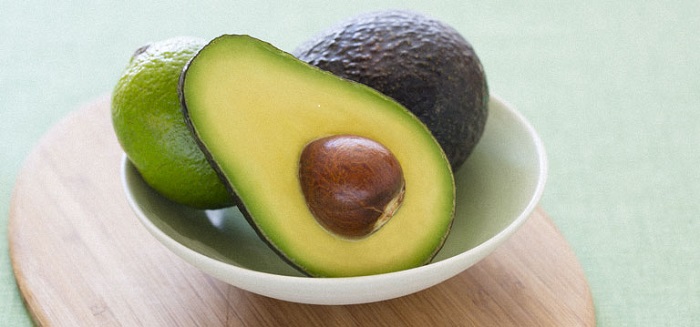
- Avocados are popular and loved by many.
- In fact, consumption in the U.S. has risen more than fourfold in the last 20 years.
- But how much do you know about the creamy green fruit (yes, it’s a fruit!)?
- Are there avocado health benefits you should know about?
- Where do they come from?
- And are they sustainable?
You can find avocados almost everywhere — from grocery stores and farmers markets to chocolate pudding recipes.
Once considered a delicacy, this green tree fruit is now a common addition to tables and menus all over the world.
People’s love affair with avocados has gained traction in recent years. The growth in sales outpaces that of any other fruit. And in 2015, The Washington Post dubbed avocados “America’s new favorite fruit.”
What Is an Avocado?
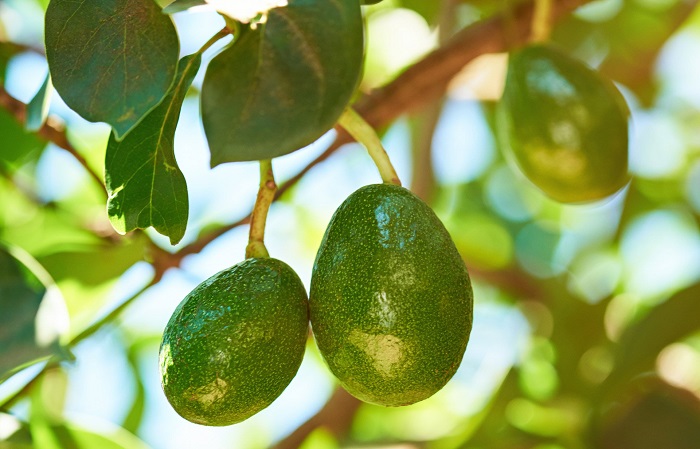
The avocado is an evergreen, tropical tree with green, pear-shaped, nutrient-dense fruit. The term avocado refers to both the tree and the fruit.
Avocados come in hundreds of different varieties. And the tree is a member of the flowering plant family, Lauraceae.
The fruit itself is technically a berry containing one large seed. But keep in mind that the scientific definition of a berry (a fruit derived from the ovary of a single flower) varies from common usage. Botanists will tell you that eggplant is a berry and a strawberry is not. So I wouldn’t jump at a berry cobbler made by a botanist!
While they aren’t sweet, avocados are a satisfying and versatile food with a creamy, buttery texture. And they have a rich flavor from the high-fat content.
Avocado Health Benefits:
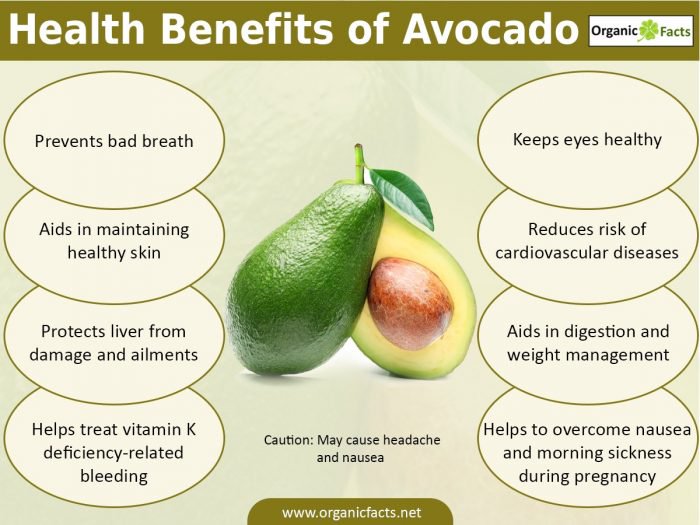
Avocados offer an abundance of fiber, potassium (more than a banana!), and vitamins B6 and C. They’re also rich in folate, which can boost your mood!
But any way you slice it, the nutrient avocados offer the most of is fat. In fact, one cup of avocado provides 21 grams of fat. The type of fat found in avocado, therefore, matters a great deal. And it’s mostly a mixture of monounsaturated and polyunsaturated fats.
Polyunsaturated fats are essential: This means they’re necessary for your body to function, but it can’t make them itself. Your body uses these fats to build cell membranes and the covering of nerves. And they’re also needed for blood clotting and muscle movement.
Monounsaturated fats: These are similar to the fats found in olive oil. Some studies have linked them to reduced inflammation, lower risk of heart disease, and anti-cancer effects.
While many people debate the health effects of specific types of fat, I think that’s a bit like debating whether a trumpet is a good instrument. Taken by itself, it’s arguable. But when it’s in a talented band, playing excellent music, the equation can change considerably.
To me, avocados are a bit like one of the finest orchestras ever assembled. They’re not only delicious — but they also contain a fabulous and nutritious symphony of components that combine to create a nourishing, satisfying (and, in my personal opinion, delicious!) result.
And unlike, for example, avocado oil, a cup of avocado provides 10 grams of fiber.
Plus Avocados Have Few Pesticides:
According to the Environmental Working Group (EWG), avocados are one of the Clean 15. (The list of produce least likely to contain pesticide residue.)
Fewer than one percent of conventional avocados tested positive for pesticides.
So if you can’t afford organically grown avocados, you can choose conventionally grown varieties without any major pesticide exposure.
15 Ways Avocados Can Support Your Health:
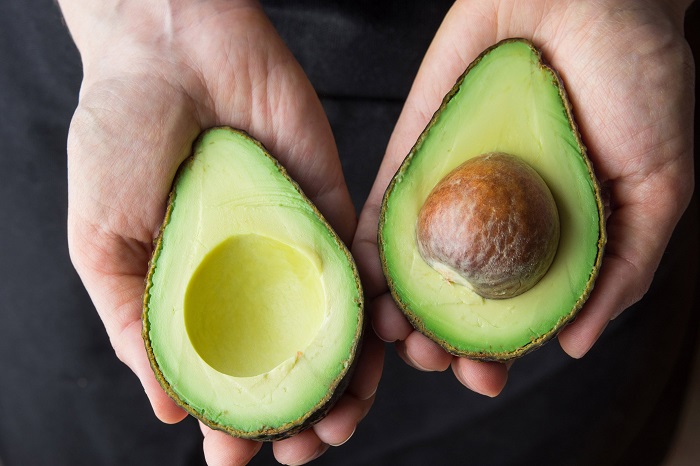
Fifteen (15) Healthy Benefits of Eating Avocado:
- Avocado eaters tend to be healthier: A 2013 study published in the Nutrition Journal found that avocado consumers tend to have higher nutrient intake and lower rates of metabolic syndrome. They also have lower weight, lower BMI, less belly fat, and higher levels of HDL (high-density lipoprotein, or “good”cholesterol).
- Avocados can help you better absorb antioxidants: Some nutrients are fat-soluble. That means you should consume them with fats so your body can properly absorb them. A 2005 study published in The Journal of Nutrition found that eating carotenoids (antioxidants including lycopene and beta-carotene) with avocado or avocado oil increased their absorption.
- Avocados may help prevent and treat cancer: A 2015 study published in Cancer Research found that avocatin B, a compound derived from avocado, can help kill leukemia cells. A 2015 research review published in the Journal of Agricultural and Food Chemistry found that phytochemicals (plant compounds) in avocados make them potentially beneficial for preventing cancer.
- Avocados can reduce your risk of heart disease: A 2015 study published in the Journal of the American Heart Association found that eating one avocado per day as part of a moderate‐fat, cholesterol‐lowering diet reduced LDL (low-density lipoprotein, or “bad”cholesterol).
- Avocados may aid in weight loss: A 2013 study published in the Nutrition Journal found that people eating avocado with a meal felt 23% more satisfied. And they had a 28% lower desire to eat in the next five hours versus people who didn’t eat an avocado.
- Avocados may boost brain health and memory: The fruit is rich in oleic acid (or OEA), an omega-9 fatty acid that’s linked to improved cognition. A 2009 study published in the Proceedings of the National Academy of Sciences of the United States of America found that these types of acids can enhance memory.
- Avocados may help lower the risk of depression: Eating monounsaturated fats have been shown to reduce depression. (And balancing fat intake may help control depression.) And the high amount of folate has been shown to help maintain your brain’s feel-good chemicals, dopamine and serotonin.
- Avocados can help prevent neurodegenerative diseases, such as Alzheimer’s and Parkinson’s: A 2016 study published in Advances in Neurobiology found that the “diverse array of bioactive nutrients” present in avocados play a key role in the prevention and cure of these types of diseases.
- Avocados can keep your eyes healthy as you age: The fruit is rich in the carotenoids lutein and zeaxanthin, which can help protect and maintain healthy cells in your eyes. According to a 2017 study published in the journal Nutrients, avocado can help boost macular pigment with age.
- Avocados can help prevent gum disease: A 2006 study published in the Journal of Periodontology found that key ingredients in avocados may enhance protective effects against periodontal disease.
- Avocados can help ease osteoarthritis: A 2010 review published in the journal The Physician and Sportsmedicine found that key ingredients in avocados can help patients with arthritis of the hip or knee.
- Avocados can combat metabolic syndrome: Metabolic syndrome is an assortment of linked issues including high blood sugar, high serum cholesterol, high blood pressure, and high body mass index, which lead to an increased risk of type 2 diabetes and cardiovascular disease. A 2017 study published in the journal Phytotherapy Research found that the “lipid‐lowering, antihypertensive, antidiabetic, anti‐obesity, antithrombotic, antiatherosclerotic, and cardioprotective effects of avocado” can help protect against this syndrome.
- Avocados can help prevent food poisoning: A 2013 study published in the journal BioMed Research International found that the antibacterial activity of avocados can help protect against e. Coli and other foodborne pathogens.
- Avocados can help reduce liver damage: A 2000 study presented by the American Chemical Society found that avocados contain chemicals that can protect against liver toxins. And avocados may be able to lessen the liver damage caused by the hepatitis C virus.
- Avocados can be great for pregnant women: A 2016 study published in the journal Nutrients concluded that avocados are high in folate and potassium (typically under-consumed in maternal diets) as well as fiber, monounsaturated fats, and lipid-soluble antioxidants — all of which are tied to improvements in maternal health, birth outcomes, and quality of breast milk.
Any Down Sides to Avocados?
Avocados are high in fat and calories. So if excess weight is a concern, you may want to create some limits on how many you eat. A small amount can go a long way.
And if you’re prone to migraines or are allergic to latex, avocados might not be the fruit for you.
For those who suffer from migraines, certain foods, circumstances, or environmental factors can trigger episodes.
Avocados sometimes appear on lists of such foods due to the high levels of tyramine (a substance formed when proteins break down) they contain when overripe.
In addition, avocado contains some of the same allergens found in latex. So if you have a latex allergy, you may want to watch out to see if avocados trigger any of the same symptoms.
Eight (8) Types of Avocados Worth Knowing About:
Hundreds of varieties of avocados exist, which vary widely in color and size. Some are green, others are black, and they range from as small as only a few ounces to as large as five pounds.
The most common types of avocados include:
Hass Avocados:
Hass — the small, dark green, bumpy variety you’re probably used to — is eaten more than any other. In fact, Hass avocados made up 97% of avocado sales in the U.S. in 2018. And they accounted for about 80% of all avocados eaten worldwide.
Hass has become so popular because it’s great for exporting and importing. Believe it or not, it also ripens more slowly than other kinds (believe it or not). A Hass avocado also changes color when ripe and has a relatively thick skin.
They’re quite rich and can have up to 20% oil content. Their season is year-round, which works out well because that’s exactly the same as my season for guacamole!
Choquette Avocados:
Native to South Florida, these large, bright-green avocados are lighter in flavor and less oily than Hass.
They have firmer flesh and hold up well in salads — though most people tend to prefer the buttery flavor of Hass.
Many Floridians have shady Choquette trees growing in their backyards. And they’re in season in Florida from June through March.
Bacon Avocados:
Not to worry — no pigs are harmed in the making of these tasty avos!
Bacon avocados are oval shaped and have smooth green skin. They have pale yellow flesh and a creamy texture. They tend to be sweeter and more watery than Hass. Bacon avocados are in season from November to March.
Fuerte Avocados:
Considered extremely flavorful, these pear-shaped, green avocados are grown in California and have a smooth, medium skin.
The Fuerte is easy to peel, and many consider it the best tasting, so grab some if you can! Fuerte avocados are in season from November to June.
Tonnage Avocados:
This green, pear-shaped variety originated in Guatemala. It has a lower oil content than Hass or Choquette and a sweeter taste.
It’s in season from August through late September.
Daily 11 Avocados:
Weighing up to five pounds, the Daily 11 avocado is related to the Hass. It may be the largest variety grown in California.
Pear-shaped or baggy with a thick skin, this avocado also has an oily texture. It’s in season from August through October.
MacArthur Avocados:
Originally cultivated in California, the MacArthur is a large variety with a hard green shell and creamy inner fruit.
Buttery and nutty when ripe, it’s in season from August to November.
Shepard Avocados:
Native to Australia, these “greenskin” (their skin stays green as they ripen) avocados are the second most common variety down under.
They’re longer than Hass, have a nutty flavor, and are available from February to April in Australia.
Where Do Your Avocados Come from?
With the increasing demand for avocados, it’s important to consider the source— as well as other issues surrounding the massive growth of avocado consumption.
The majority of avocados consumed by Americans come from Mexico.
In 2017, the country exported more than 1.7 billion pounds of Hass avocados to the U.S. Given the exponential rise of the industry, particularly in Mexico, many are concerned about its role in deforestation.
In addition, according to The Smithsonian, the popularity of Hass avocados is creating a monoculture, where native varieties of avocado are being cut down and replaced with Hass trees.
So what can you do?
To vote with your dollars against a future of monocultures of Hass avocados, consider giving another avocado variety a try! Also, buying U.S. grown avocados helps minimize transportation distance.
If you’re in Florida, California, Hawaii, or a tropical country, you’re likely to find some other options at your local farmer’s market or grocer.
When Is an Avocado Ripe?

As many an avo-lover is aware, avocados can ripen quickly — often too quickly!
Most of us know the pain of forgetting about an avocado and then realizing it’s become too mushy to eat.
So how do you know when your avocado is ripe? It does depend on the variety. Hass avocados grow darker as they ripen, but so-called greenskins keep their color.
To determine ripeness, gently squeeze your avocado with all fingers. If a slight amount of pressure causes it to “give,” it’s ready!
Don’t press avocados with your thumb, though. It can bruise the fruit. (That technique is why many supermarket avocados end up ruined.) The human thumb is the natural enemy of the avocado!
You can also peel back the small stem or cap at the top of the avocado. If it comes away easily and if you find green underneath, you’ve got a good avocado that’s ripe and ready to eat.
And with a thicker-skinned or hard-shelled variety, you can pull out the little cap and stick a toothpick in. If it’s soft, the avo is ready to eat!
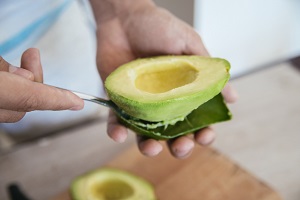 The Best Way to Peel an Avocado:
The Best Way to Peel an Avocado:
Peeling this fruit can be a challenge sometimes.
The highest concentrations of antioxidants are closest to the skin. So, you want to try to get as much of the flesh as you can.
The California Avocado Commission recommends the “nick and peel” method. Here’s how it works (you can check out a visual how-to on the CAC website):
- Wash your avocado.
- Cut it lengthwise, around the seed.
- Rotate your fruit and cut it into one-quarter segments.
- Separate the pieces and remove the seed.
- Starting from the top of each piece, nick and peel the flesh off. Then discard the skin.
How to Store Avocados:
For storage, keep avocados at room temperature until they’re ripe.
If your avocado is ripe, but you’re not quite ready to eat it, put it in the fridge. They’ll usually keep that way for three to five more days.
To speed up the ripening process, put your avocado in a brown paper bag and add an apple.
If you have half an avocado or it’s already cut up, squeezing a little lemon juice on it will help keep it from browning.
Five (5) Different Ways to Eat an Avocado — Besides Guacamole!!!
If you’re looking to add more avocado to your diet, here are a few creative recipe ideas to try!
This flavorful recipe uses avocado in a dip along with basil and walnuts to create a nutrient-dense, perfect party food!
- Baked Avocado Fries
You may have seen avocado fries on the menu at select eateries, but this oil-free recipe from Simple Vegan Blog is a baked, healthier version of the snack!
Avocado and toast are a match made in heaven. This recipe from Minimalist Baker is super simple and uses whole-grain bread, avocado, vegan parmesan, and red pepper flakes.
- Avocado Quinoa Salad
Combine avocado and quinoa, and it’s the ultimate superfood salad! Try this easy, delicious recipe from Veggies Save the Day.
Who knew avocado made such a wonderful addition to desserts? This mousse recipe from Chocolate Covered Katie is rich and full of antioxidants.
- Special Thanks to Ocean Robbins and Food Revolution Network for much of the contents supplied in this article.
Tell us in the comments:
- Are you an avo lover?
- What avocado health benefits do you appreciate?
- What are your favorite ways to eat avocados?
- Have you ever enjoyed other avocado varieties, other than Hass?
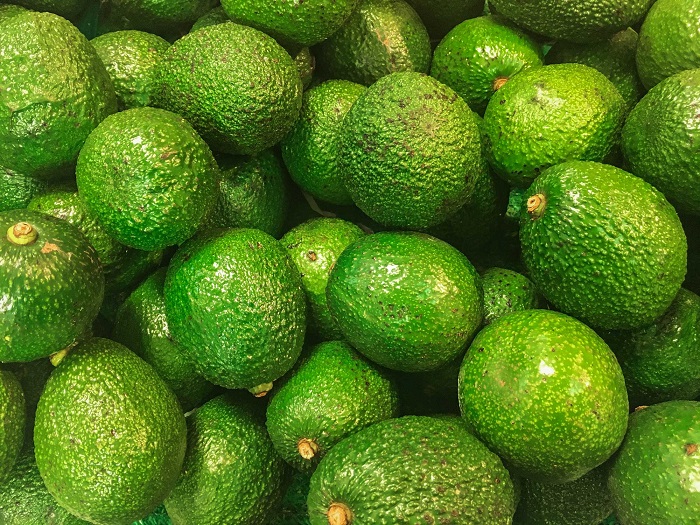
Thanks, this is an excellent article / post…
Thank you for Avocados – The Fabulous Fruit, is very informative. Try this incredible food!!! 🙂
I love avocados, and these are perfect recipes. SO nice for you for sharing this info and some recipes about avocado.
thank you!
Respect to the author, excellent…
Some genuinely interesting information, well written and very user pleasant.
I’m surprised with the analysis you made to create this actual publish extraordinary. Wonderful task!
This post is the best I have come across so far.
Magnificent beat! I would like to apprentice, if available…
Very good blog post. I certainly love this site. Thanks!
Having read this I thought it was extremely enlightening. I appreciate you finding the time and energy to put this informative article together. I once again find myself spending a significant amount of time both reading and posting comments. But so what, it was still worth it!
Thanks for another informative website. Where else could I get that kind of information written in such a perfect method?
You should be a part of a contest for one of the highest quality sites on the net. I most certainly will recommend this blog!
I am really loving the theme/design of your website.
If you would like to grow your know-how just keep visiting this website.
Excellent post, you now have a new reader.
Excellent post, very informative. I wonder why the other experts of this sector don’t notice this. You must continue your writing. I’m sure, you have a great readers’ base!!!
A motivating discussion is worth comment. I think that you need to write more on this issue. To the next! Many thanks.
Hey there I am so thrilled I found your web site, I really found you by error, while I was looking on Google for something else, Anyways I would like to say thank you for a incredible post and an all round enjoyable blog (I also love the theme/design). Please do keep up the great job.
Good info and straight to the point. Thanks 🙂
Hi, I am really glad I’ve found this information. Today bloggers publish just about gossips and this is really frustrating. This is a good site with exciting content, and is what was looking for. Thanks
Thanks for the good article. Please continue this great work…
I was extremely pleased to discover this post. I want to thank you for this wonderful article!! I definitely appreciated every part of it and I have you bookmarked to look at new information on your web site.
I was excited to discover this website. I want to to thank for this wonderful read!! I definitely liked every part of it.
Nice post, I really liked and learned so much from it.
I’ve been surfing online for a while, but I never discovered any attention-grabbing article like these. In my view, if all site owners and bloggers made good content as you did, the internet would be a lot more helpful.
A large percentage of of what you mention happens to be astonishingly accurate and it makes me wonder why I hadn’t looked at this with this light previously. This article really did turn the light on for me as far as this subject goes. Very well done.
Excellent as are your other posts: Thank you for posting.
I’m very pleased to find this page. I want to to thank you for your time for this fantastic read!!